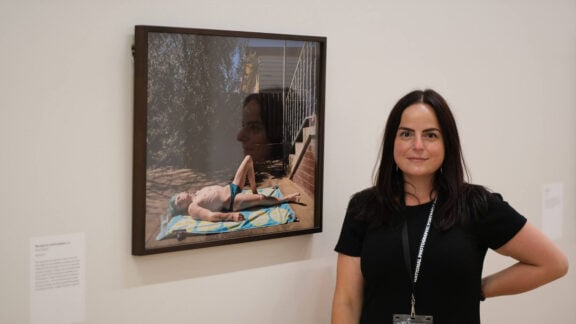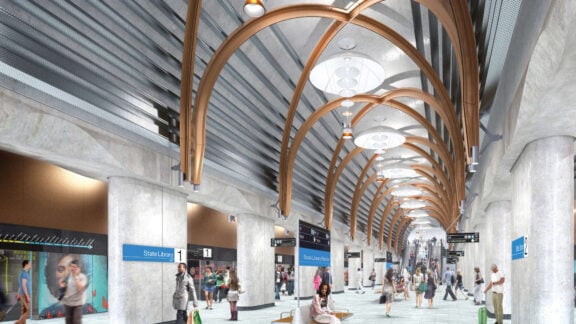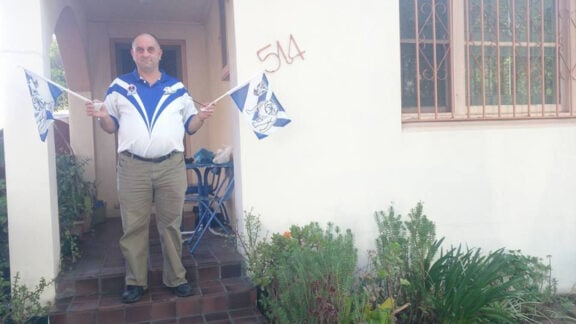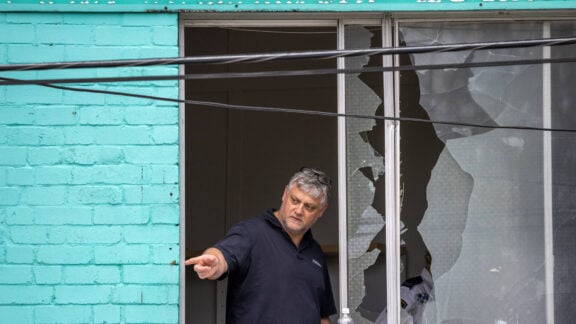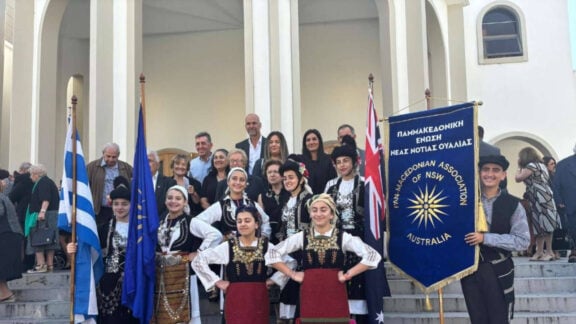On Saturday I passed through the Royal Exhibition Building to explore the 2024 Italian Festa. I arrived thinking that this was my first time at the event, but was surprised to find out I had been many times before! Although this was only the second year of the Festa at the Royal Exhibition Building, the Festa itself is a continuation of the old Lygon Street Festa which I had frequented in the past.
Location location location
The move to the Royal Exhibition Building is notable from a cultural and a product point of view. Firstly from a product perspective, the location offers a grand indoor area which partially safeguards the event from poor weather. It rained quite heavily on Saturday so this space was very useful. A flexible footprint is also available in the surrounding area too, with the festival able to use the paved areas around the building for an outdoor experience. This creates multiple zones to explore and can entertain patrons for hours without getting bored.
In contrast to Antipodes, this creates a more dynamic product. Antipodes runs the length of Lonsdale Street and the completion of one lap is often enough for some people. The lack of sheltered areas as well means poor weather can decimate festival experiences and Antipodes attendance numbers. However this year I noticed the Festa didn’t actually provide as much seating as Antipodes, so despite the indoor space, Antipodes actually provided more comfort (given in good weather). This also has the effect of discouraged food purchases at the Festa and the discomfort was exacerbated by poor acoustics in the Royal Exhibition Building which combined crowd noise and music acts into loud and disjointed noise.
The second major contrast is the cultural significance of the location. Prior Festas on Lygon Street were tightly connected to the Italian presence of the street, but as this has diminished over time, the Festa went through different naming conventions and seemed confused as to whether it should be a celebration of the Italian community or Lygon Street itself. Moving the Festa to the Royal Exhibition Building ends this debate with this year’s event definitively being a celebration of Melbourne’s Italian community. This marks a great opportunity for Melbourne’s Italian culture as it offers a clear platform for cultural expression unburdened by a street scape culture that sits outside of its control. Although a sad move I think this is a necessary more. The connections to the Royal Exhibition Building are better, with closer train, tram access and more parking. The area does not require the same level of traffic management or disruption and it provides a more pedestrian friendly space.

In contrast, Antipodes has masterfully side-stepped a lot of these issues. It is actually more accessible than even the Royal Exhibition Building by virtue of its even more central city location, but it has also maintained its cultural relevance by defining itself as a meeting place, rather than by the street it is held. Lonsdale Street’s Greek activity these days is minimal, however the relatively larger amount of Greek cultural bands, dance groups and community institutions have allowed Antipodes to present an irrefutably Greek festival on Lonsdale, rather than try present a festival on a ‘Greek Lonsdale’.
A different economic engine powers this Italian culture
The Italian community is far larger than the Greek community with over 1,100,000 Italian Australians compared to about 400,000 Greek Australians, however they express themselves in vastly different ways and benefit from a different economy back in the home country.
Whereas the Greek community retains higher language retention rates, and higher activity in cultural organisations, the Italian community is more likely to make their livelihood through Italian products. The Festa may have lacked in cultural groups relative to Antipodes, but it presented Car Companies, Bed Manufacturers, Appliance Companies, Security System Companies, and dozens of other Italian industry groups, of which Antipodes has barely any. The strength of Italian industry and its global competitiveness, relative to Greece, means the festival enjoys commercial support beyond what Antipodes could dream. It also means, critically, that there is an economic reason for diaspora members to learn about Italian culture as it can provide global economic opportunities.
The economic differences don’t just end with the home country’s global competitiveness, but also regarding the size of the market. There are about 80 million Italians world wide with major communities in the Americas. There are only about 15 million Greeks. This not only assists the retention of cultural and language practices in industry, but also creates a greater flow of immigration to Australia. Throughout the fesat you could see Italian professionals manning many of the stalls, and many young Italians migrants serving food and drinks. These first generation travellers are fluent in the language and provide a constantly refreshing Italian population to Australia.
At Antipodes, it is far more common to see stalls operated by third Generation migrants. There simply aren’t enough young Greeks for their net migration to Australia to be as noticeable as it is for the Italians. Even with the recent post-crisis brain drain of Greeks migrating from the country, many elected to move within Europe rather than Australia. As such, the critical mass of fluent Greek speakers is constantly under threat, whereas the flow of Italians provides a stronger cultural safety net (although by no means a perfect one). As recently as 2013 though over 20,000 Italians arrived in Australia on temporary visas, a number that exceeded Italians immigration in 1950–51 during the previous migration boom. Walking around the festival ultimately you didn’t just see Italian-Australians, but rather Italian Industry, and an ever refreshing Italian Community.

Food is more than food
Souvlakia, souvlakia, souvlakia. This is the singular dominating force of Antipodes. Good street festival food that provides a great experience. The Festa on the other hand presents food differently. The variety of consumable options was one thing, but number of food businesses offering (as well as even more economic cultural opportunities) and accessible cultural touch point was incredible. Frozen food, dried pasta, cheese products, and antipasto were all on offer for anyone to take home, offering a simple way to access Italian culture without the burden of language or the need for strong community or family ties.
You won’t see Feta being bought at Antipodes, nor will you see frozen loukania sold, and if you did I bet you strangers wouldn’t pick them up. The Festa leveraged an Italian cultural capital that now cuts through across Australian mainstream culture and allows third and fourth generation Italians a never ending way to access their culture where it is most important… home. As we become more reliant on Coles and Woolworths to stock Greek products the Greek Community must find a way to mainstream its products in a similar way. Unless non-Greeks buy into Greek food culture, there exists a future where Psarakos is the only place your grand children will be able to buy mizithra, and even if they did, there is a chance they wouldn’t know what to do with it.
Food for thought
The Italian Festa was an amazing event offering many differences from the major Greek Australian festival we have all come to know. Both festival offer incredible experiences and a window into two diaspora’s different expressions of their cultural identity.. Thankfully the Festa presented an enjoyable, purposeful and accessible taste of Italian culture from which we as a Greek community can learn a lot from.
*Emmanuel Heretakis is a financial analyst with a passion for empowering local communities. He has been a long term contributor of Channel 31 and a member of its Advisory Committee.


